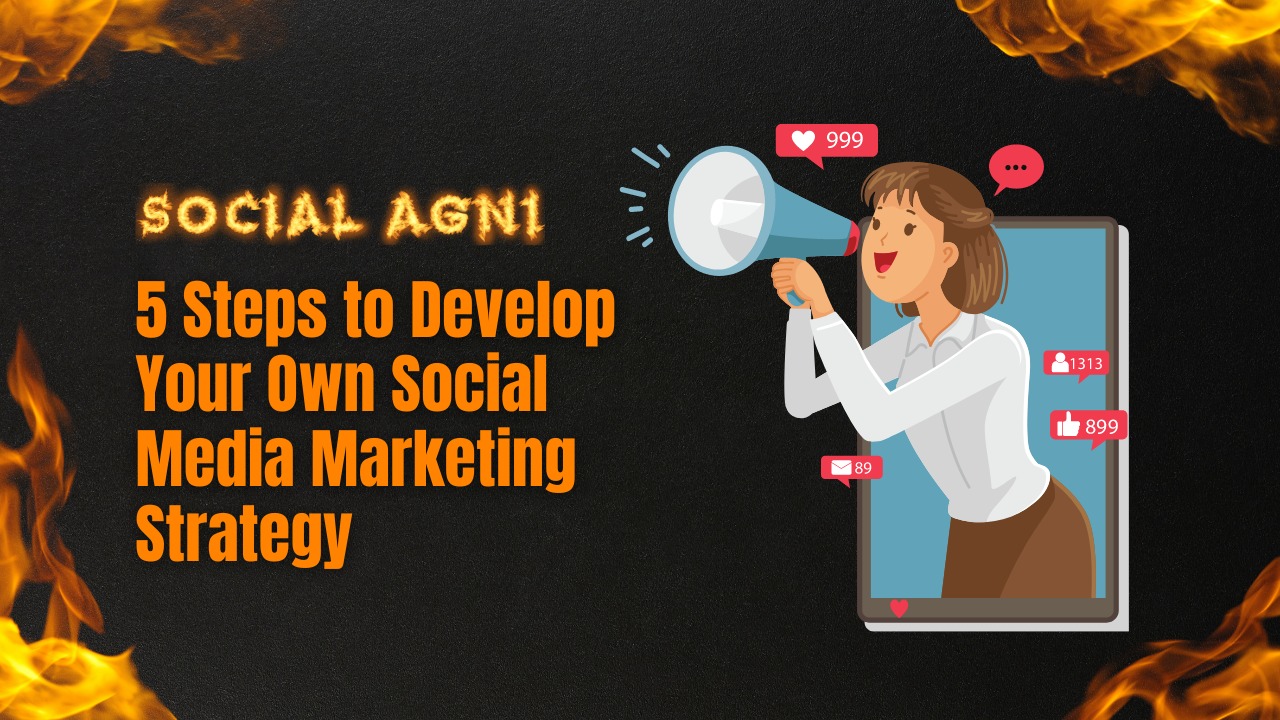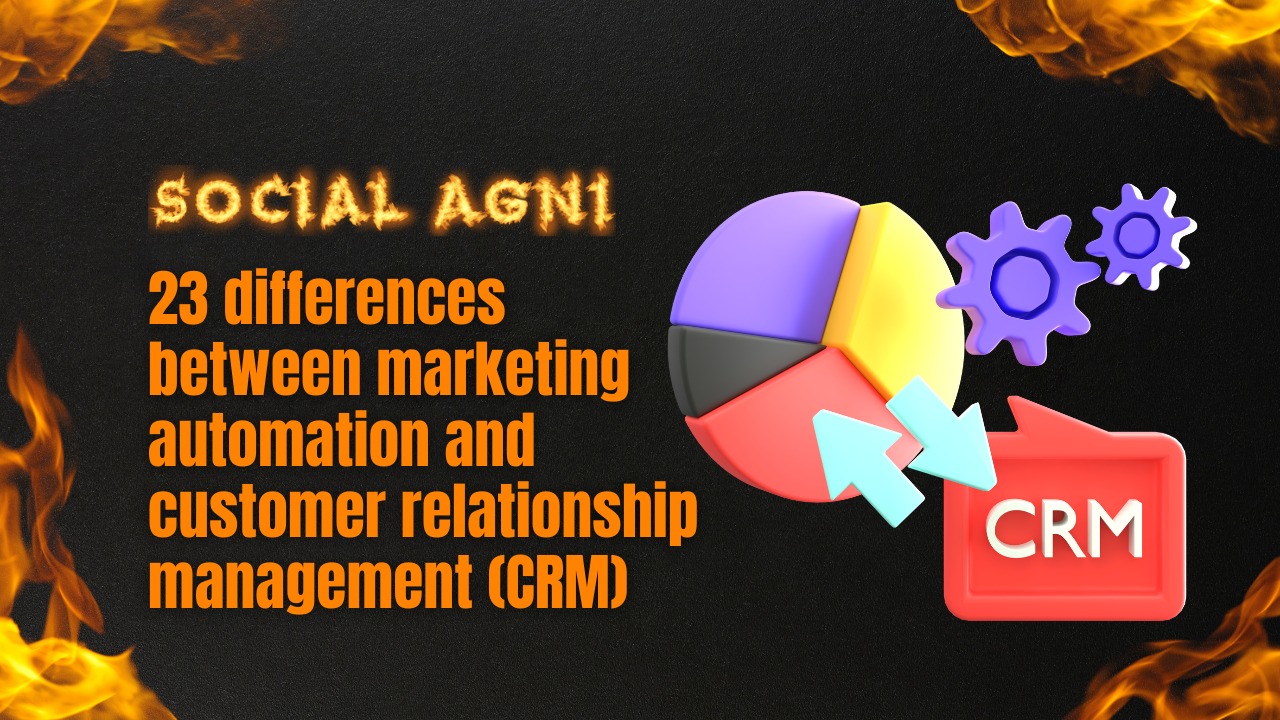Social networking is an essential component of our fast-paced digital life. Social media has changed how we connect with friends and family and discover new companies and goods. Businesses may use social media as a great marketing tool to reach and engage their target audience. Without a clear social media marketing plan, businesses may get lost in the noise and fail to reach their goals. Social media marketing is essential for all businesses. It shows how to use social media to market products and services and increase brand awareness, website traffic, leads, and sales. A well-planned approach helps companies stand out in a congested digital space.
Set specific and quantifiable goals to start your social media marketing campaign. Your social media goals? Want to boost brand visibility, audience engagement, website traffic, or leads? Goals help you focus and measure strategy success. After setting goals, choose your audience. Who are your social media targets? Understanding your audience’s demographics, interests, online behaviors, and preferences is essential to providing relevant and engaging content.
Your plan also requires selecting the correct social media channels. Different platforms have different users and features. Find out where your target audience is active and likely to engage with your material. This ensures resource allocation and target audience. Engaging content drives social media success. Your brand’s content should be informative, interesting, and consistent. Use photos, videos, infographics, and written content to engage your audience. To be active on social media, create a content calendar and update it regularly.
Finally, tracking and analyzing your social media activities is crucial. Track reach, engagement, click-through rates, conversions, and ROI with social media analytics. These insights can help you tweak your plan, make data-driven decisions, and maximize your social media marketing effect. In conclusion, firms must design a social media marketing plan to use social media platforms. Set clear goals, identify your target audience, choose the correct platforms, create compelling content, and analyse your performance to create a digital strategy that produces significant results and helps your business succeed.
Step 1: Set Clear Goals
Successful social media marketing starts with goals. Without goals, social media activities might be unfocused. Goals help you focus, make decisions, and evaluate your plan. This phase will discuss the necessity of defining specific social media marketing goals and how to define them.
When creating social media goals, ask yourself: What do I want to achieve? Depending on your company goals, goals should be SMART—specific, measurable, attainable, relevant, and time-bound. Social media marketing often seeks brand exposure. You may want to get followers or impressions. Driving website traffic is another goal. Social media efforts to obtain email addresses or contact information are also common goals. Most companies want to boost sales.
Consider your business and sector while creating goals. Evaluate your social media performance. Check engagement rates, click-through rates, conversions, and social media campaign income. This will help you set realistic goals based on your present position and possible progress.
Your ambitions should also match your corporate objectives. Consider how social media may aid your organization’s aims. If your firm wants to enter new markets, your social media goals might include reaching and connecting with local audiences. Document your goals clearly. This documentation guides strategy formulation and tracks success. Break goals into actionable KPIs. Make success simpler by assigning measurements and objectives to each KPI.
Maintain your goals by monitoring and reviewing them. Set new goals to keep challenging yourself and growing. Finally, your social media marketing campaign needs defined goals. Objectives guide decision-making, quantify achievement, and give direction. SMART goals will help you use social media to promote brand exposure, website traffic, leads, and sales. Keep your goals current and difficult to advance your social media marketing.
Step 2: Identify Your Target Audience
Successful social media marketing requires targeting your audience. Knowing your audience and what they want helps you create content, messaging, and marketing that engages and connects. We’ll discuss how to identify your target audience at this stage.
Start by establishing your target demographics. Consider age, gender, location, income, education, and employment. This information helps you understand and generate content for your target audience.
Next, study your audience’s psychographics. Psychographics comprises lifestyle, values, interests, and motives. This information helps you generate personalized, emotive content that matches their tastes. Market research may reveal your audience. Use surveys, interviews, focus groups, and social media analytics to get feedback. Analyze your current customers to find patterns. This study will reveal audience demands, pain spots, wants, and goals.
Buyer personas help you understand your target audience. Buyer personas are fictitious representations of ideal customers. Demographics, psychographics, goals, difficulties, and preferences are included. Creating thorough personas lets you humanize your target audience and tailor content to their needs and interests. Use social media analytics and insights to understand your audience’s online behavior. Facebook, Instagram, and Twitter give demographic, interaction, and interest data. This helps you determine which platforms your target audience uses and adapt your content.
To construct a target audience profile, organize and capture all necessary information. This profile will guide your social media marketing. Your audience may change as your business does. To keep your plan current, regularly examine your audience’s preferences, behaviors, and needs. Use surveys, feedback forms, and social media to learn from your audience.
In conclusion, targeting your audience is essential to social media marketing. You may personalize your content and marketing to connect and interact with your target audience by studying their demographics and psychographics, performing market research, establishing buyer personas, and analyzing social media analytics. Reassess your audience’s preferences and requirements to meet their changing expectations. Know your audience to generate engaging content that gets results.
Step 3: Choose the Right Social Media Platforms
Social media marketing requires selecting the proper channels. Each platform has distinct features, users, and communication styles. Reach and engage your target audience by choosing platforms that match their tastes and behaviors. This stage will discuss the significance of picking the correct social media networks and how to make educated judgments.
Analyze your audience’s demographics and psychographics. Consider age, location, hobbies, and internet behavior. This data will show you which social media channels your audience prefers. LinkedIn may be best if your target audience is professionals and B2B contacts. Instagram and TikTok may work better for younger, more visual audiences.
Learn about each social media network. Facebook has a diversified user base and several advertising choices. Fashion, cuisine, and tourism businesses benefit from Instagram’s visual content and narrative. Twitter is ideal for trending news, influencer engagement, and real-time updates. LinkedIn connects companies and professionals to exchange industry-specific content. Businesses that can use the video material to engage and educate customers should use YouTube.
Consider your content. Instagram, Pinterest, and YouTube may be optimal for visual content strategies. Medium and LinkedIn articles are useful for writing content.
Assess your company’s resources. Multiple social media sites need time and resources. It’s preferable to focus on a few platforms than spread yourself too thin. Assess your team’s platform management and maintenance abilities. See which social media channels your rivals and industry leaders are utilizing successfully. This might reveal where your target audience is most engaged. Analyse and adapt their strategies to your company goals.
Finally, explore and adjust. New platforms and trends emerge in social media. Keep up with industry news and try new platforms that fit your audience and goals.
In conclusion, your social media marketing approach depends on selecting the correct platforms. You may choose which platforms to prioritize by analyzing your target audience’s interests, studying platforms, considering the content you want to generate, assessing your resources, and watching your competition. As social media changes, experiment. Selecting the correct platforms helps you reach and engage your target audience, maximizing your social media marketing efforts.
Step 4: Create Engaging Content
Successful social media marketing requires interesting content. Your audience will interact and engage with compelling and relevant material. We’ll discuss how to create interesting content at this stage.
- Understanding your audience’s interests, requirements, and preferences is essential to creating content that connects. Consider the target audience’s preferred material from prior research. Address their problems, entertain, educate, or inspire them with your material.
- Create a content strategy to plan and organize your content generation. Define themes, subjects, and forms that fit your brand and audience. Create a content calendar for consistency and flow. This technique will help you create a variety of content, including photographs, videos, infographics, articles, and interactive postings.
- Tell captivating stories to hold your audience’s attention. Create brand-aligned tales that touch your audience. Storytelling humanizes your brand and connects with your audience.
- Visual content engages and stands out in social media feeds. Use captivating photos, videos, infographics, and GIFs to express your point. High-quality, on-brand, and social media-optimized images are essential.
- Social media engagement is crucial. Ask questions, solicit feedback, and invite audience participation. To build community and inspire involvement, respond quickly to comments, emails, and mentions.
- Try different content forms and methods. Try live videos, UGC, competitions, polls, and interactive quizzes. Social media analytics tools can track content performance and inform strategy. To find out what your audience likes, track engagement, reach, shares, and conversions.
Step 5: Measure and Adjust
Measuring and tweaking your social media marketing plan is essential. Analyzing important data and insights helps you understand your impact, find areas for development, and optimize your strategy. Measure and tweak your social media marketing plan at this stage.
Key metrics: Determine your social media marketing KPIs first. Reach, engagement, click-through rates, conversions, follower growth, and customer acquisition are examples. Metrics let you track progress, assess performance, and discover areas for growth.
Use analytics tools: Social media sites have built-in analytics tools that provide performance information. Use these tools to track reach, impressions, interaction, demographics, and more. Third-party analytics solutions offer deeper research and cross-platform comparisons.
Review and analyze data: Review and analyze social media analytics regularly. Depending on your social media activity and regularity, this may be weekly, monthly, or quarterly. Find patterns, successes, and failures. Check which material works, which platforms get the most engagement, and how your efforts match your aims.
Change tactics: Adjust your social media marketing plan using data analysis. Create more high-performing content. Reevaluate a platform that repeatedly underperforms. Adjust your content strategy, publishing schedule, targeting, and messaging.
Experiment with A/B testing: A/B testing lets you compare two social media campaigns or content to see which works better. Test headlines, images, call-to-actions, and publishing timings to find the best ones. Optimise content and guide future decisions with the findings.
Keep up with industry trends: Social media features, algorithms, and trends change continuously. To stay relevant and capitalize on new social media marketing possibilities, be informed. To remain ahead, attend industry events, follow think leaders, and join online groups.
Measure and change your plan regularly. Social media changes consumer behavior quickly. Monitor your performance, adjust to market changes, and optimize your plan.
Conclusion
Social media marketing takes careful preparation and implementation. Set clear goals, define your target audience, choose the correct social media channels, develop compelling content, then measure and adapt your efforts. Clear goals help you assess social media marketing performance. Understanding your target audience is essential for adapting content and marketing to their requirements. Choose the correct social media sites to reach your audience where they are most active and engaged. Engaging material attracts and fosters meaningful relationships. Finally, using data and insights to measure and change your approach helps you optimize and remain ahead of market trends.
Following these stages and improving your plan can help you develop a strong online presence, engage with your audience, and generate business outcomes. Keep up with new social media trends, tools, and methods. To stay ahead, evaluate your plan, adjust to changes, and innovate. With a solid social media marketing plan, you can expand your brand, engage your audience, and reach your business goals.
Frequently Asked Questions (FAQs)
Q1. Social media marketing—what is it?
Social media marketing promotes products or services, builds brand recognition, engages target audiences, and drives traffic and conversions. It entails posting content, targeting ads, and connecting with people on Facebook, Instagram, Twitter, LinkedIn, and YouTube.
Q2. Why is social media marketing crucial?
Social media marketing helps businesses interact with customers on a personal level, reach a large audience, and establish brand loyalty. Businesses may promote their goods and services, receive client feedback, and increase website traffic. Social media marketing offers low-cost advertising and real-time client involvement.
Q3: Which social media networks should my business use?
Consider your target audience demographics, interests, and online behaviors while choosing social media platforms. Compare platform features and users to your company goals and content kind. Monitor rivals and industry leaders to discover which platforms work.
Q4: Should I post on social media often?
Social media posting frequency depends on your audience and platform. To engage your audience, post regularly. Instead of posting too much, focus on excellent material.
Q5: How can I make compelling social media content?
Know your audience’s interests and requirements to develop compelling content. Storytelling, visuals, and interactivity grab attention. Try photos, videos, infographics, and live streams. Ask questions, conduct competitions, and reply to comments to engage viewers.




















